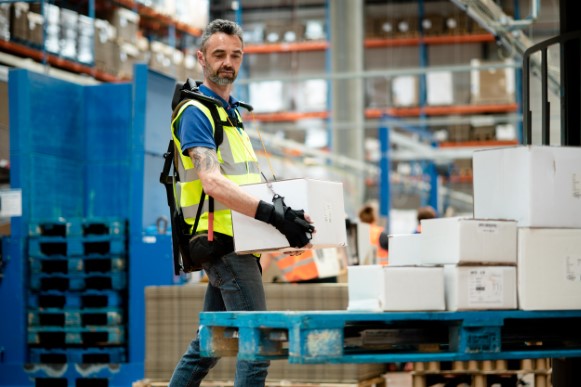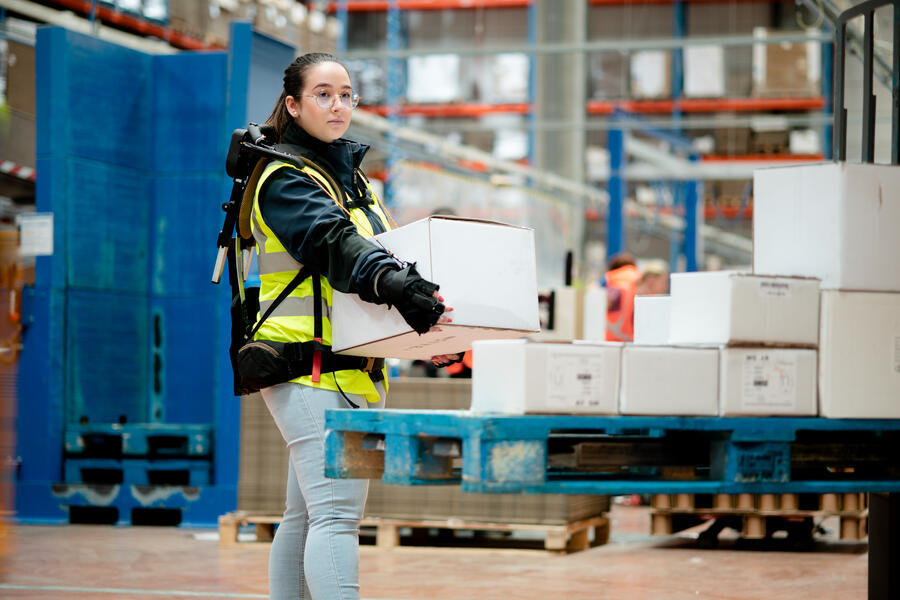Operational safety: The future of warehouse work
What is the operational safety in wharehouses? The International Labor Organization estimates that occupational diseases and accidents cause almost 3 million deaths. In addition,…
On January 18, 2023

What is the operational safety in wharehouses? The International Labor Organization estimates that occupational diseases and accidents cause almost 3 million deaths. In addition,…
On January 18, 2023
The International Labor Organization estimates that occupational diseases and accidents cause almost 3 million deaths. In addition, 374 million non-fatal injuries occur annually. According to Eurostat, in terms of fatal and non-fatal accidents, the most affected logistics solutions are transportation and warehousing, which rank second and sixth.
The ICAO Management Manual states that safety is: “a state in which the risk of injury to persons or damage to property is reduced and maintained at or below an acceptable level through a continuous process of hazard identification and risk management”.
Warehouse safety measures are those actions aimed at preventing occupational accidents in a logistics warehouse. These safety measures include obligations to avoid injuries caused by chemicals as well as ergonomic injuries or those caused by machinery or warehouse structure.
Occupational hazards are all those dangers that can occur within a workspace or when performing a specific work task. The most common safety measures in warehouses are:
All these measures are general recommendations for the safety of warehouses and warehouse workers.
At FM Logistic, one of our fundamental pillars is to take care of our personnel. Occupational health, safety and welfare are paramount concerns within the Company. FM Logistic invests special effort in preventing injuries to warehouse workers in positions involving demanding physical activities. It has worked on the development of an ergo-skeleton that analyzes workers’ postures and movements in order to help them improve working techniques and safety in warehouses. In this way, on the one hand, it helps to reduce stress and, on the other, it offers ways to improve the ergonomics of workplaces.

The logistics industry is taking steps to improve employees’ physical working conditions and warehouse safety. Taking a cue from sports innovation, where so-called wearable technology is being harnessed to push the limits of human capability. Wearable technology ranges from PPE (personal protective equipment), safety helmets and boots that assess risks, to smart glasses that give instructions and advice to the operator, to lifting aids such as ergo-skeletons. According to the consulting firm BCG, the introduction of wearable technology can have a substantial impact on economic performance. For example, it can increase revenues by 4% to 6% and reduce manufacturing. In addition, warehousing and distribution costs can be reduced by 10% to 20%, and working capital requirements by 15% to 30%.
Although the size of building a supply chain using wearable technology is enormous, it can lead to substantial improvements in performance. It can increase revenue by 4% to 6%, customer service levels by 5 to 30 percentage points and EBITDA by 2 to 4 percentage points.
There are more and more sensors on the market that collect and record physical movement data. In France, FM Logistic has conducted several campaigns over the past four years to analyze the movements and postures of order pickers and improve safety in warehouses. This is done through the use of connected work jackets and pants. In addition, the Group has recently set up an HSE (Health Safety Environment) innovation panel.
The innovation panel sought a more wearable and versatile solution for measuring and analyzing postures and movements. The panel chose Sorter Analytics’ Clip&Go solution, which monitors back and shoulder movements in real time. In addition, it identifies the worker’s trouble spots, and vibrates or beeps to alert the user in case of incorrect movement. During tests conducted on some 270 employees of FM Logistic’s Polish subsidiaries, the devices helped reduce the number of dangerous movements by 30% over a 6-month period. In addition, they provided a number of enriching ergonomic insights to prevent injuries in the workplace, especially in the warehouse.
Recently, it has also become common practice to offer workers physical aids to prevent strain and musculoskeletal disorders.
In most cases, ergoskeletons are designed to protect the lumbar region and relieve some of the strain when lifting or moving loads and increase safety in warehouses. FM Logistic has tested and used some 30 devices over the past six years. But, due to the wide variety of tasks, positions and movements of warehouse employees, many ergoskeletons prove to be too heavy or uncomfortable to wear, as well as restricting movement at intervals. One such example focuses on forklift drivers, whose tasks require them to look up more frequently, thus tilting their heads backwards and putting pressure on the cervical vertebrae. To remedy this, there is a passive device, which is attached to the shoulders and serves as a head restraint.

The future is anchored in loT and virtual reality. For example, postures and movements can be analyzed from the worker’s smartphone. This involves coupling sensors and virtual reality, where a worker’s gestures and postures are measured. This makes it possible to design ergonomic workstations. As for the search for risks in virtual reality (recently implemented at FM Logistic), the worker walks through an FM Logistic warehouse in virtual reality and has to find health and safety anomalies.
This will progressively convert the warehouse into a safer and less risky working environment. This is key to attracting potential workers and retaining them in the long term, thus meeting the growing demand for human resources in the sector.
How can we help you ?
Fill in the form